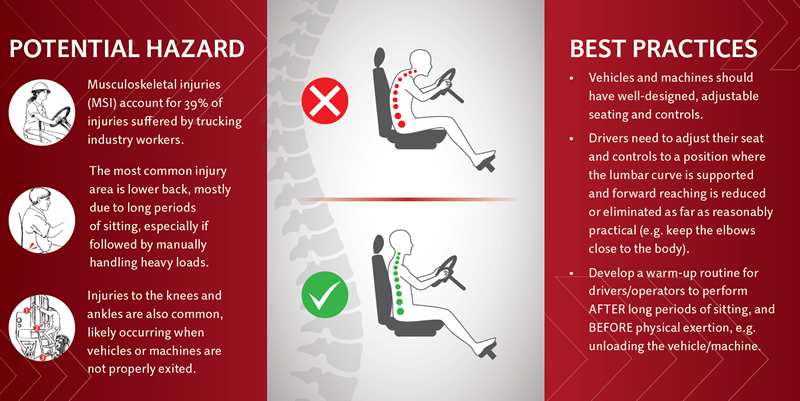What is Ergonomics?
Ergonomics is the science of matching work tasks to the body. Good ergonomics introduces designs or interventions to promote safe posture and less stress on the body to help improve productivity and decrease Musculoskeletal Injury (MSI) and Musculoskeletal Disorders(MSD).
According to the Workers Compensation Board of Manitoba (WCB), almost 71 percent of time loss injuries in 2018 were related to poor ergonomics such as poor working postures, repetitive motions, excessive force etc. A dramatic leap from 2015, which was at 40 percent. According to SAFE Work, that MSI claims cost almost $38 million that year.
Hazards include poor working postures, excessive physical and cognitive demands of the worker, improper height reaching zones, lighting and temperature to name a few. A major factor in MSI and MSD’s is repetition (how long, how often).

So why is knowing about ergonomics important?
Musculoskeletal Disorders (MSDs) are something you should be worried about.
MSD’s slowly develop over time and the soft tissues in your body – nerves, tendons, muscles, ligaments, and joints – are most susceptible to MSD’s. Injuries like carpal tunnel and tendonitis (aka-tennis elbow) are key examples of MSD’s and these injuries become worse over time (repetition).
You may not take it seriously at first, but over time your discomfort will increase in severity if you keep returning to the same, strenuous activities. At some point, your body will not be able to recover. The three main factors involve force (how much you lift, push, and pull), repetition, and your body temperature. Contact stress and vibration are also common hazards that wreak havoc upon the body if left unchecked.

You need to recognise the potential risks associated with MSI hazards in your job duties
It doesn’t matter if you are a professional truck driver, dispatcher, mechanic or office employee in the Trucking industry, all workers need to be aware of the ergonomic hazards
Rotate your job tasks when possible
It helps to reduce repetitiveness and fatigue, so it goes without saying that you should be taking scheduled breaks and paying attention to fatigue levels, as these are contributing factors in how much energy you will exert in performing tasks.
If you are a manager or employer, you can implement an MSI/Ergonomics Program
As an employer you can create job descriptions that can help determine the risk factors associated with MSI/MSD’s and use it to make a decision on changes like: upgrading tools/equipment/furnishings or changing the routine involved with the tasks.
For more information on ergonomics and workplace safety training, contact us today.

